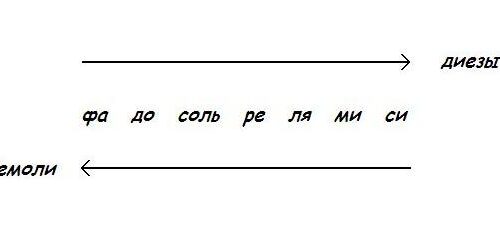Theme of music in literary works
What is the basis of musical and literary works, what inspires their authors? Their images, themes, motives, plots have common roots; they are born from the reality of the surrounding world.
And although music and literature find their expression in completely different linguistic forms, they have much in common. The most important core of the relationship between these types of arts is intonation. Affectionate, sad, joyful, anxious, solemn and excited intonations are found in both literary and musical speech.
By combining words and music, songs and romances are born, in which, in addition to the verbal expression of emotions, the state of mind is conveyed through musical expressiveness. Modal coloring, rhythm, melody, forms, accompaniment create unique artistic images. Everyone knows that music, even without words, through combinations of sounds alone, is capable of evoking in listeners a variety of associations and internal disturbances.
“Music takes possession of our senses before it reaches our minds.”
Romain Rolland
Each of the people has their own attitude towards music – for some it is a profession, for others a hobby, for others it is just a pleasant background, but everyone knows about the role of this art in the life and fate of humanity.
But music, capable of subtly and movingly expressing the state of a person’s soul, still has limited possibilities. Despite its undeniable richness in emotions, it is devoid of specifics – in order to fully see the image sent by the composer, the listener must “turn on” his imagination. Moreover, in one sad melody, different listeners will “see” different images – an autumn rainy forest, a farewell to lovers on the platform, or the tragedy of a funeral procession.
That is why, in order to gain greater visibility, this type of art enters into symbiosis with other arts. And, most often, with literature. But is this symbiosis? Why do authors – poets and prose writers – so often touch on the topic of music in literary works? What does the image of music between the lines give to the reader?
According to Christoph Gluck, the famous Viennese composer, “music should play in relation to a poetic work the same role that the brightness of colors plays in relation to an accurate drawing.” And for Stéphane Mallarmé, the theorist of symbolism, music is an additional volume that gives the reader more vivid, convex images of the realities of life.
Different languages of reproduction and ways of perceiving these types of arts make them different and far from each other. But the goal, like any language, is one – to convey information from one person to another. The word, first of all, is addressed to the mind and only then to the feelings. But it’s not always possible to find a verbal description for everything. In such moments full of excitement, music comes to the rescue. So it loses to the word in specifics, but wins in emotional connotations. Together, word and music are almost omnipotent.
Melodies that “sound” in the context of novels, short stories and stories are included in these works not by chance. They carry a storehouse of information and perform certain functions:
- The musical theme as the plot core of a work of literature (the theme of music in the literary works of Leo Nikolaevich Tolstoy “The Kreutzer Sonata”, “After the Ball”).
- The use of musical images for a more voluminous depiction of the psychological characteristics of literary characters (“Kreutzer Sonata” – music as a “double” of a character)
- The author’s idea of the writer is based on the image of a musician, his ideas about life, music, and the people around him (as in the works “Mozart and Salieri” by Alexander Sergeevich Pushkin and “Cavalier Gluck” by Theodor Amadeus Hoffmann).
- Creating a literary work based on the structure of a musical one (“Mozart and Salieri” by A.S. Pushkin is structurally similar to “Requiem,” the last masterpiece of the brilliant composer, Afanasy Fet’s poems pleasantly resemble a romance, and some of Boris Pasternak’s music improvisation).
The theme of music in literary works is also felt in the active use of means of creating images. Repetitions, sound writing, leitmotif images – all this came to literature from music.
“… arts are constantly transforming into one another, one kind of art finds its continuation and completion in another.” Romain Rolland
Thus, the image of music between the lines “revitalizes”, adds “color” and “volume” to one-dimensional images of the characters’ characters and the events they experience on the pages of literary works.





